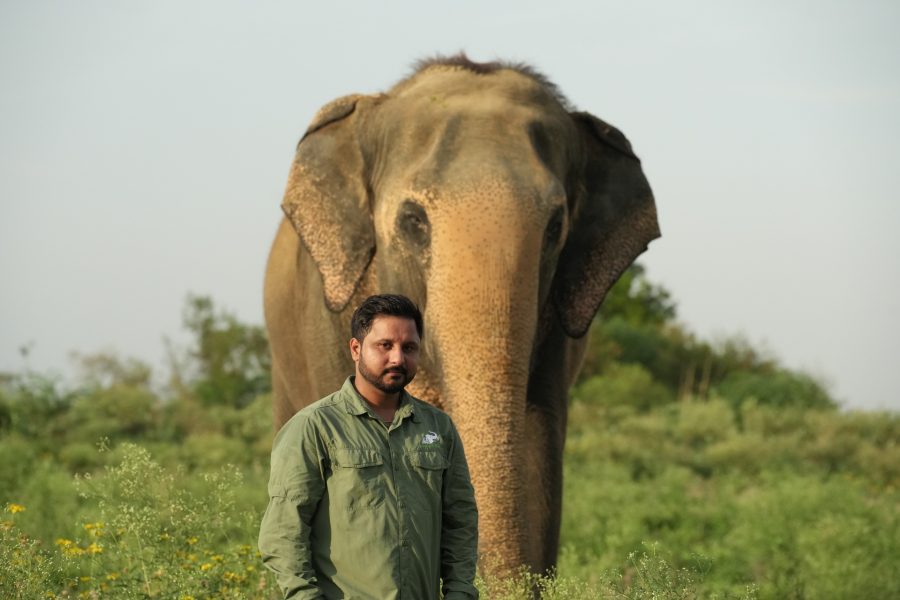The elephant proudly holds the title of the largest living land mammal on the planet, which means that the weight of this responsibility rests on their strong limbs. Their body weight is divided on their forelimbs and hindlimbs in a 60 to 40 ratio. At first glance of their large feet, the wide nails and thick skin hide the intricate skeletal structure that enables an elephant to silently “tip toe” through their natural forest habitats.
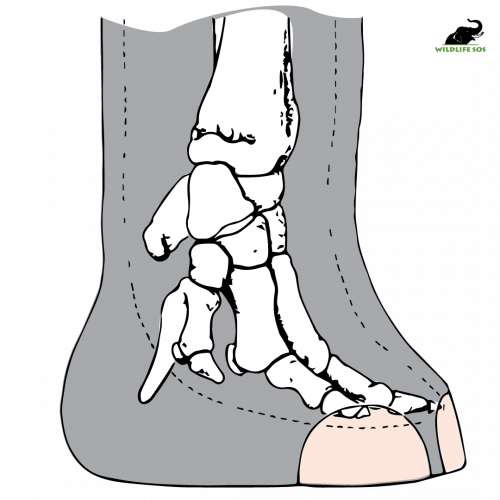
Elephant feet have the important duty of balancing the animal’s towering structure, which is why they are naturally built with soft, large, sensitive foot pads which are essential in spreading out and potentially reduce pressure when the foot hits the ground. They also have enlarged false toes, or predigits, that are embedded on the pads. These also ensure that pressure is shifted from the sole to the rest of the limb.
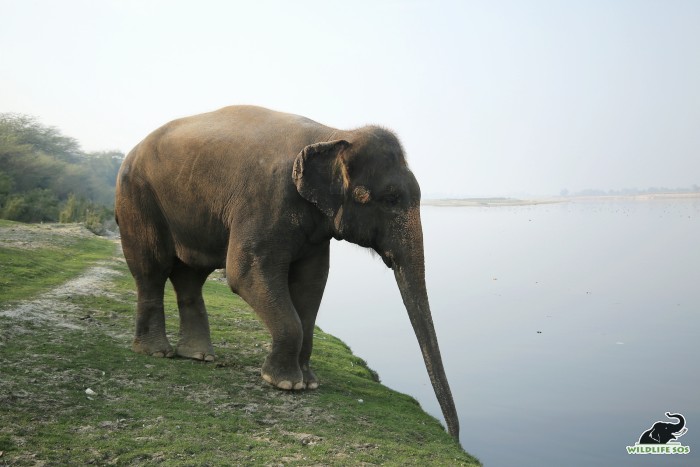
India is known to have record-breaking heatwaves during peak summer season. It is tough to imagine what the elephants have to endure walking on blazing tarmac roads with their sensitive foot pads. Many of these elephants suffer from a complete loss of vision which makes it challenging for them to avoid road debris or understand where they’re stepping next.
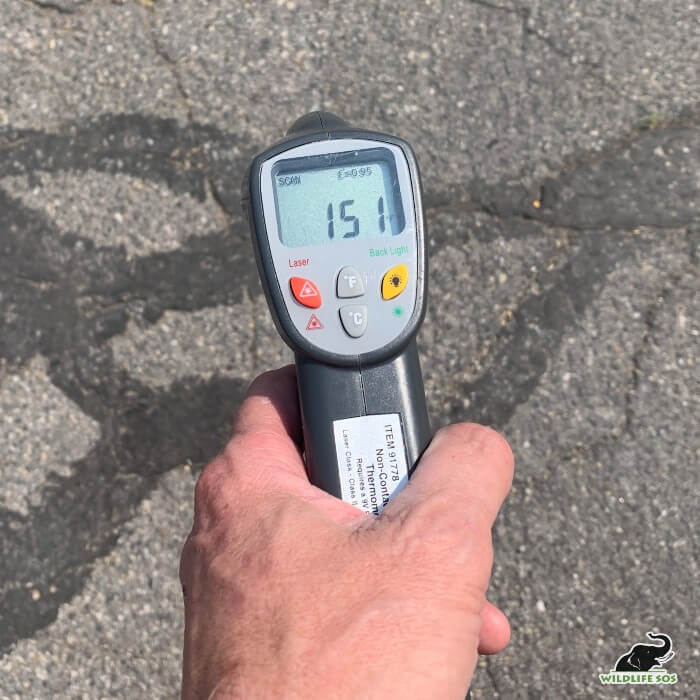
However, it is extremely unfortunate that the condition of elephants in captivity is nothing like their natural habitats. They come from a history of neglect which permanently damages the natural condition of their feet only to leave behind abscesses, thin worn-out soles and wounds that can cause extreme levels of pain.
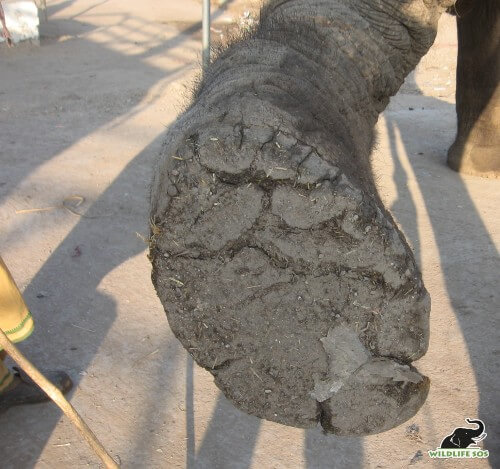
Under such conditions, the elephants develop severe, often irreparable foot rot, that compromises their gait and renders them lame. Their compromised gait can cause a cascade of other medical issues to alternate feet, joints, and bones.
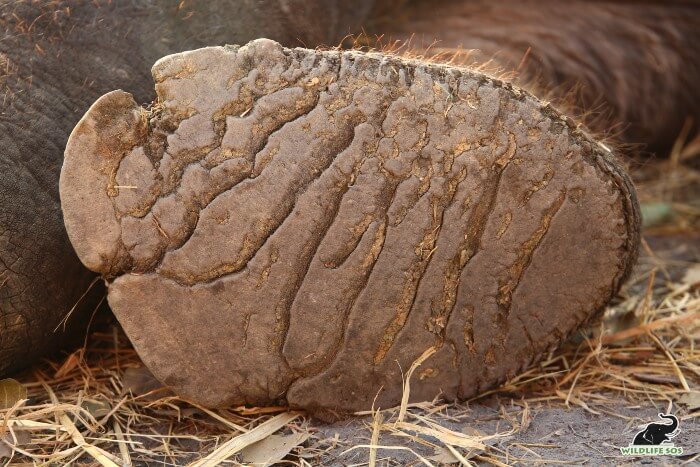
Spending most of their lives begging on the streets, being used in processions, tourist rides adorned in heavy ornaments and carriers in addition to constantly walking on unnaturally hot surfaces damages their feet. As these elephants are denied basic medical treatment and rest, these injuries never fully heal, leading to chronic problems. Therefore, each time that one compares the feet of a wild elephant to the one in captivity, the difference is visible, profound and heart-breaking.
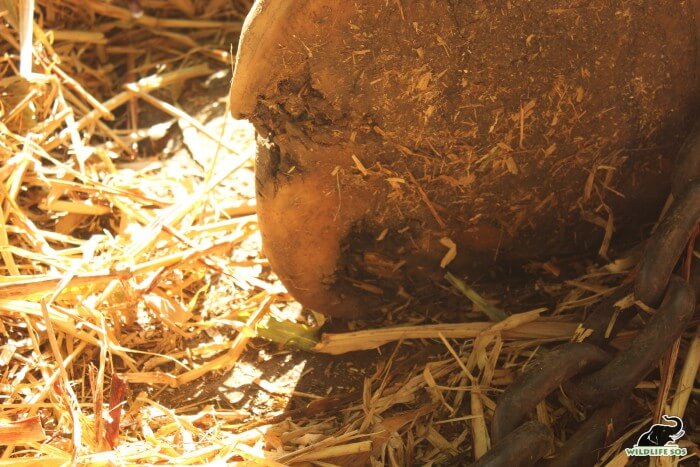
With an elephant’s feet designed to walk on soft, pastured floors in the forest, an unnatural floor is bound to make the condition of the feet worse as well as severely compromise the amount of pressure that an elephant’s limbs are supposed to take. This eventually leads to joint problems like osteoarthritis, ankylosis, as well as abscesses on the footpad, overgrown toenails, infected cuticles and many such conditions that require proper treatment and medical attention.
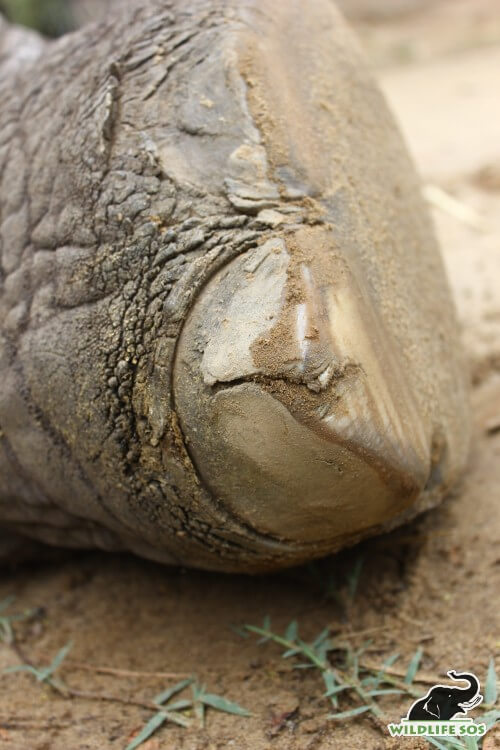
When Emma was rescued and rehabilitated at the Wildlife SOS Elephant Hospital, our veterinary team was shocked at what the results came out to be when they conducted X-Ray. Her X-ray examination revealed that there was embedded debris, nails, stones and shards of glasses in her feet.
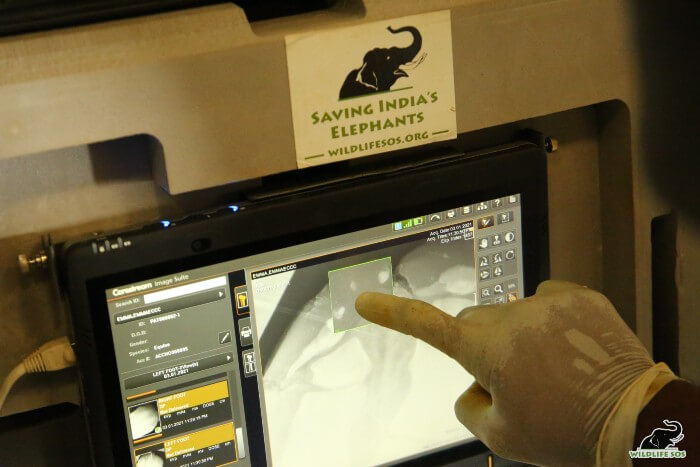
Road debris from walking on these unnatural surfaces can become embedded deep in an elephant’s sensitive footpads, causing extreme pain and infection. It’s not uncommon to find stones, nails, glass and other materials in the abscessed feet of begging elephants.
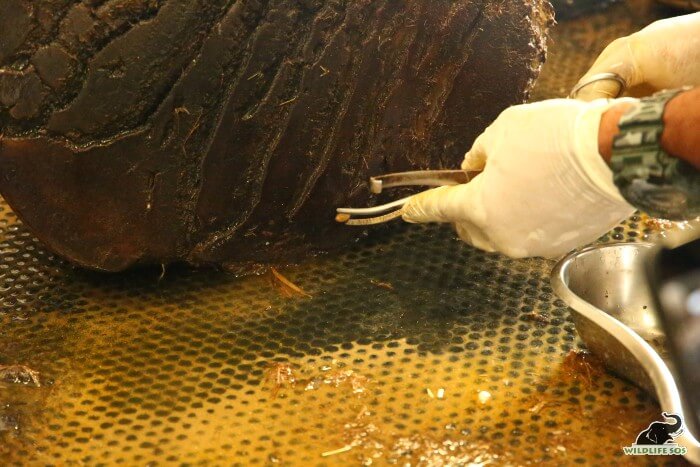
A common problem that our elephants suffered from, at the time of rescue, were overgrown toenails and infected cuticles. Since in the forests, it is easier for elephants to rub their feet against rough bark of the trees or scratch themselves against the trees, such conditions cannot be completely replicated in captivity.
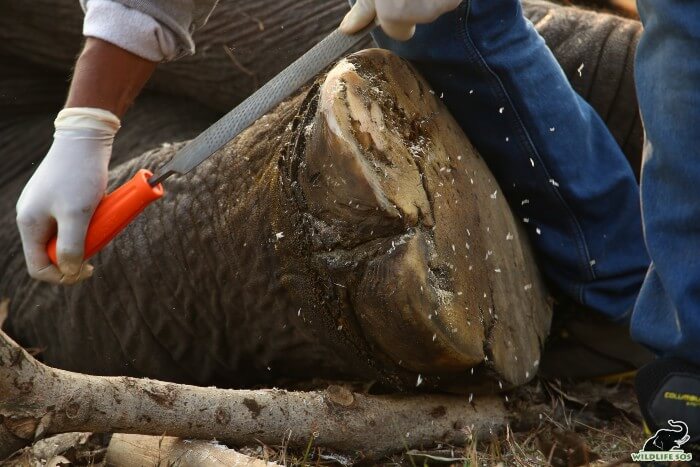
This is why our elephant care staff regularly conducts toenail trimming sessions for our elephants, ideally once every two weeks depending upon the age and condition of the elephants’ feet.
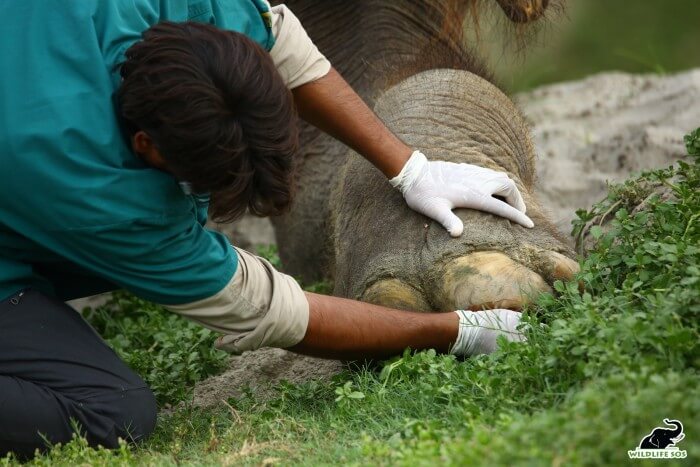
The enclosures of our elephants have a treatment area and a large spacious field with various enrichments. While the treatment area is made of concrete to allow proper drainage of water, to avoid infections, the spacious fields have soft mud flooring which courses relief through their ailing limbs. Our elephants love to indulge in relaxing dust baths, long naps and even dig dust pits with their feet!
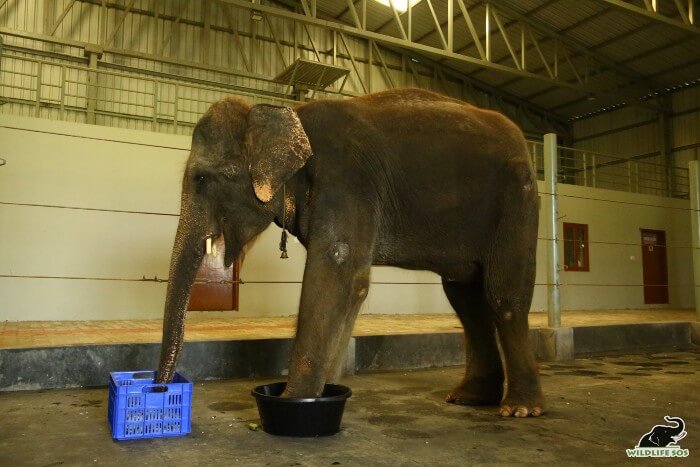
Wildlife SOS has rescued and rehabilitated over 40 elephants from horrific situations who suffer from an array of medical conditions. When we rescue abused elephants, our veterinary team charts a specialised treatment routine that involves intensive foot care along with a curated diet. Diet plays an important role in helping the elephant to gain strength without further adding stress on their joints.
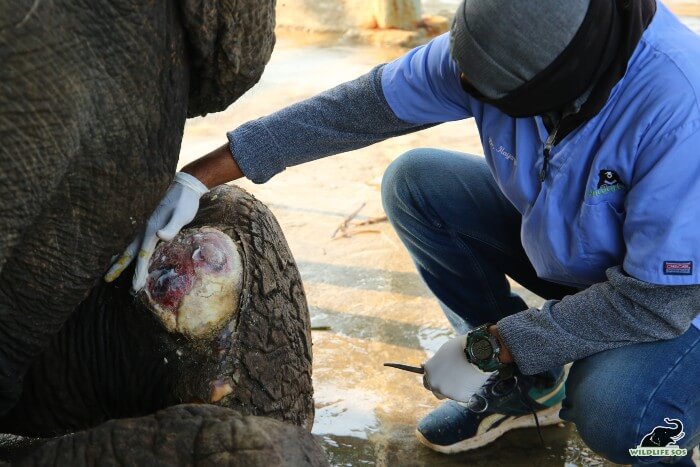
An important part of foot care in elephants involves medicated foot baths consisting of turmeric as well as Epsom salt mixed in lukewarm water in which the elephant dips their feet for 30 minutes. Elephants like Zara, Asha, Emma, Karma, Holly, Kalpana are among the few who receive these foot baths daily for treatment and healing of toenails and footpad injuries as well as abscesses, infections, etc.
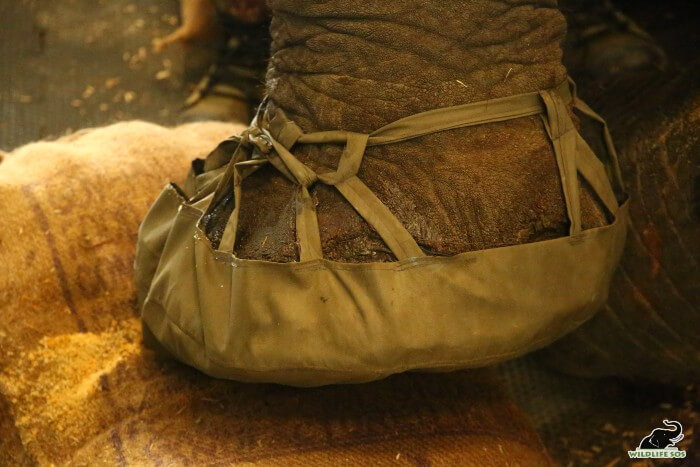
Oil massages in the winter are also very helpful in protecting our elephants from cracking their feet and skin in harsher winter winds, and giving relief to their arthritic limbs.
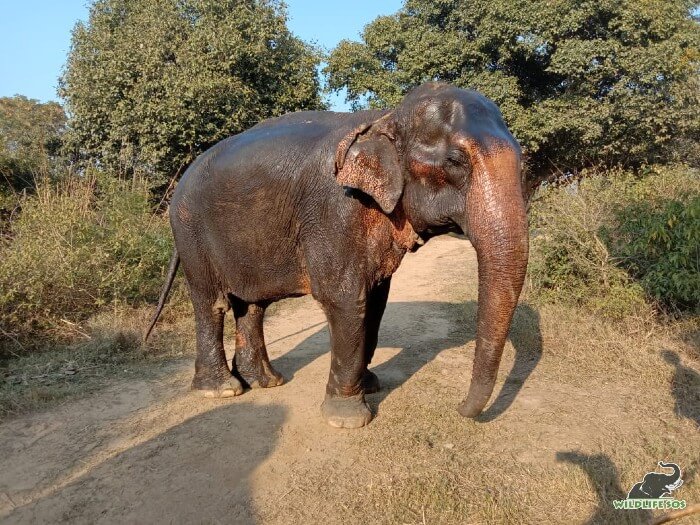
One can see the relief in the eyes of our pachyderms each time that they dip their feet in the medicated foot baths, wear an elephant shoe with medicines filled in it or walk around their spacious enclosures on soft mud grounds. Our veterinary team uses medical poultices made from turmeric, aloe vera, glycerin and boric acid to expedite healing of infected toenail and foot pad abscesses.
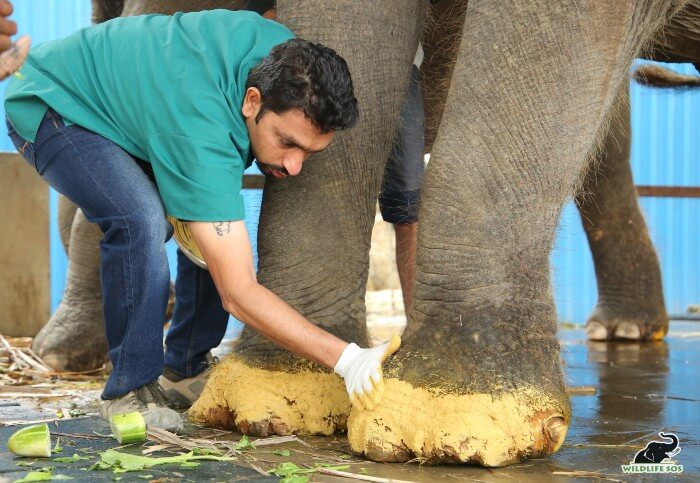
We also use magnesium sulphate and turmeric towards the end of the treatment to coat the abscesses so as to prevent maggot infestation. Foot care is administered to our elephants while they are comfortably lying down in the treatment area, cooperating with delicious fruits and vegetables.

Popular tourist spots that promote elephant rides for the purpose of tourism often cover up the feet of the elephants they abuse with fancy, bright coloured cloth. This is done as an attempt to hide the bleeding abscesses or infected wounds that these elephants suffer from. The neglect of these wounds is what causes them to rupture while the elephant is out, leaving behind trail of pus and blood.
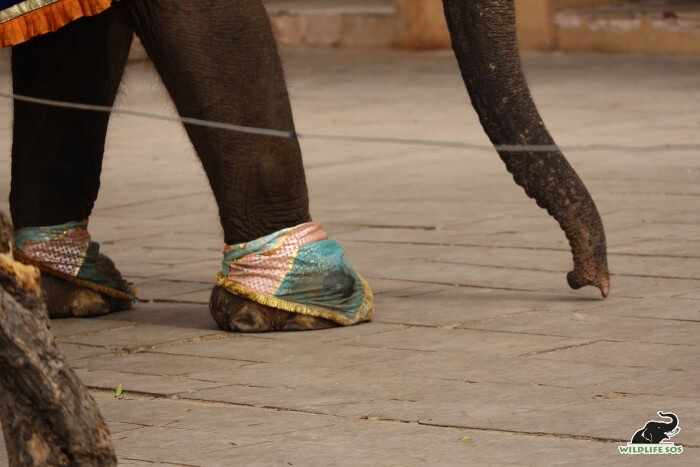
The elephant care staff uses positive conditioning and target training as a method to ensure that our elephants cooperate during these highly intensive treatment sessions. The caregiver reward the response to a certain command with treats such as peanuts, dates and jaggery, we even have chopped cucumbers and watermelons to give them.
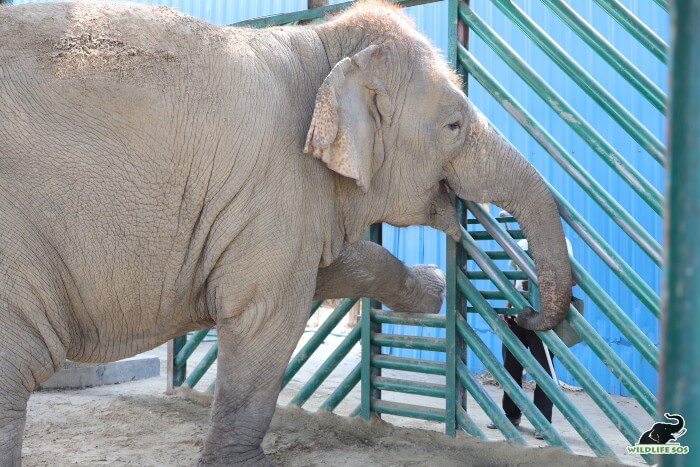
At Wildlife SOS, we understand the importance for rendering proper foot care treatment to our resident elephants. They have suffered for most part of their lives, walking on blazing tarmac roads, with most of them developing arthritis at a very young age. Our elephants take brave steps in their healing journey due to the dedicated efforts of the elephant care staff and the veterinary team who chart individualised treatment plans for each elephant under our care. None of this would be possible without the outpouring love and support that we receive from kind people like yourselves! Thank you for helping us create a humane, ethical and kind environment for these gentle giants.



